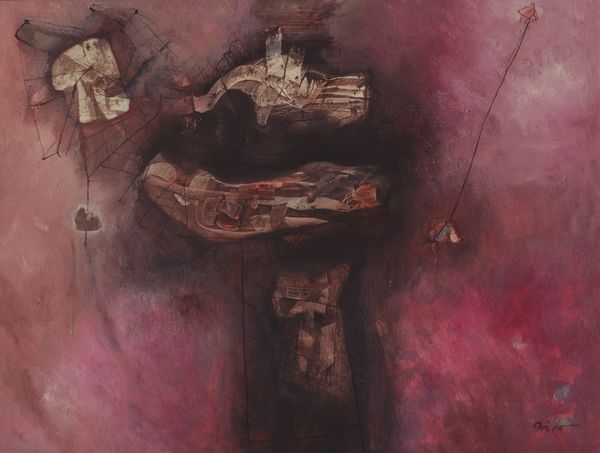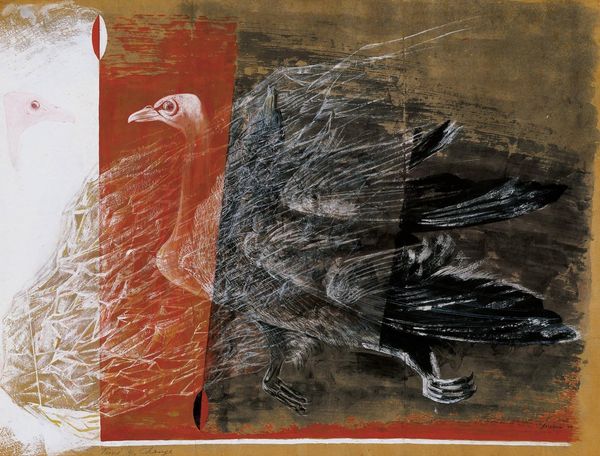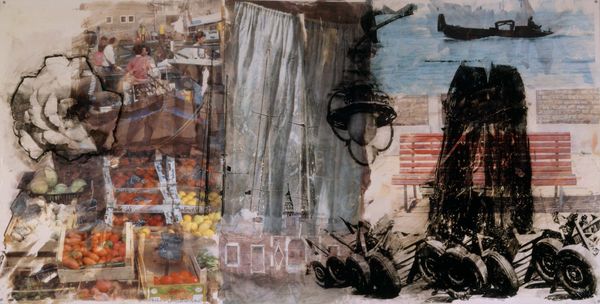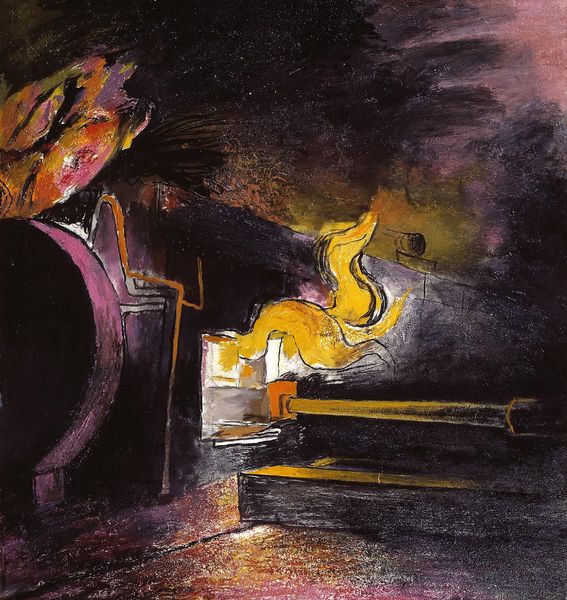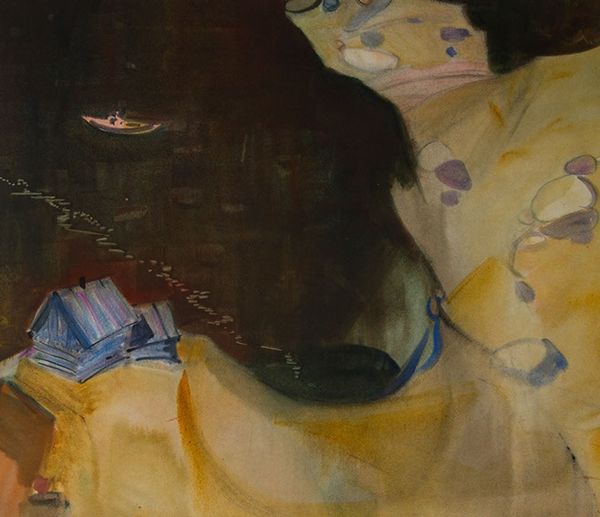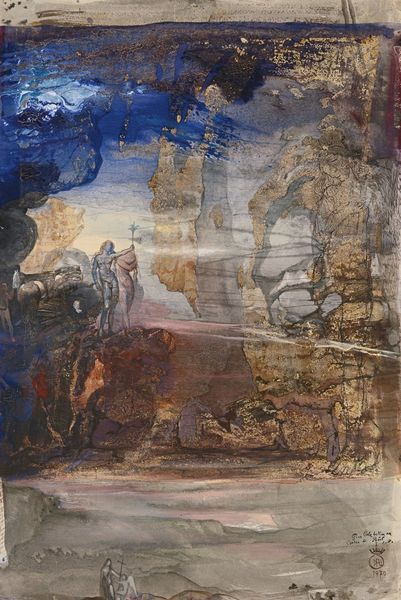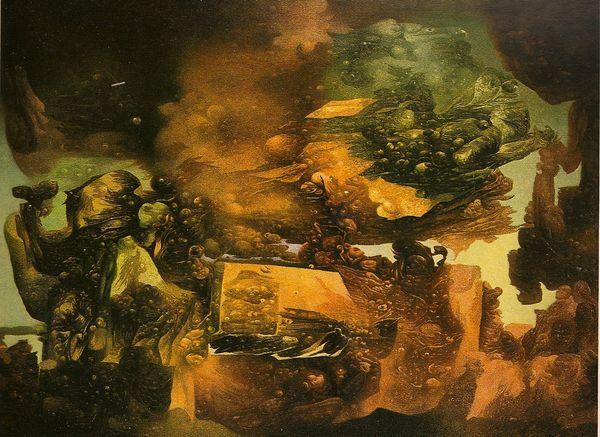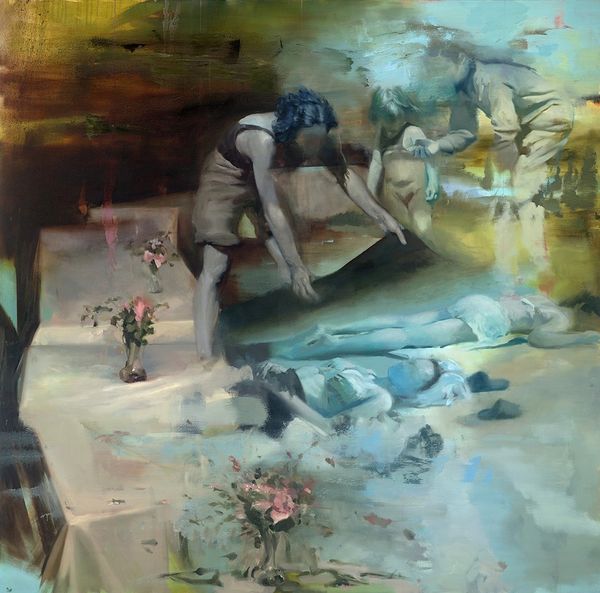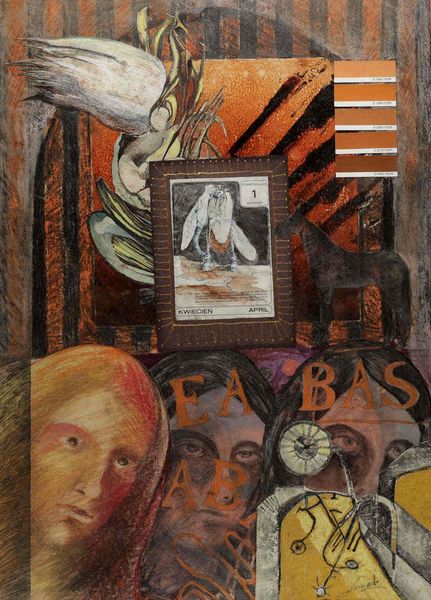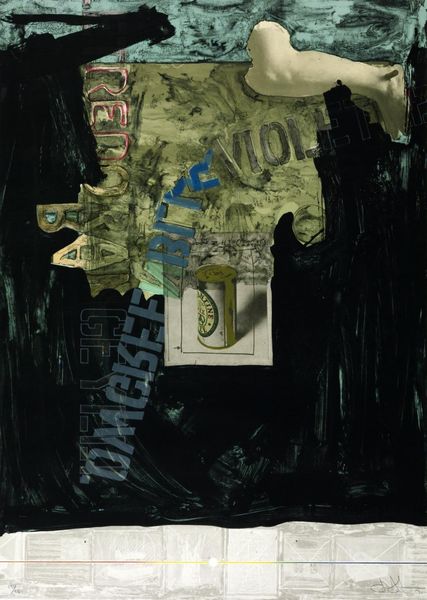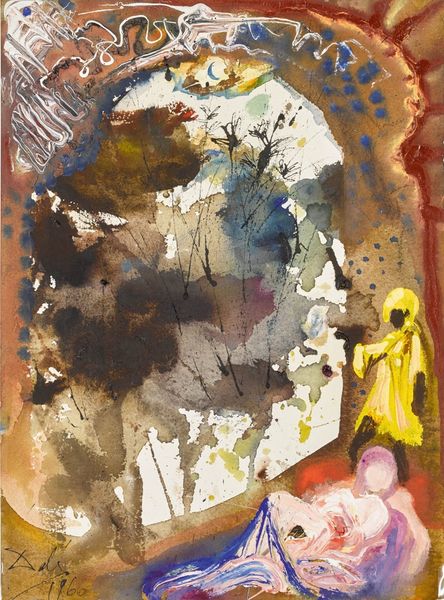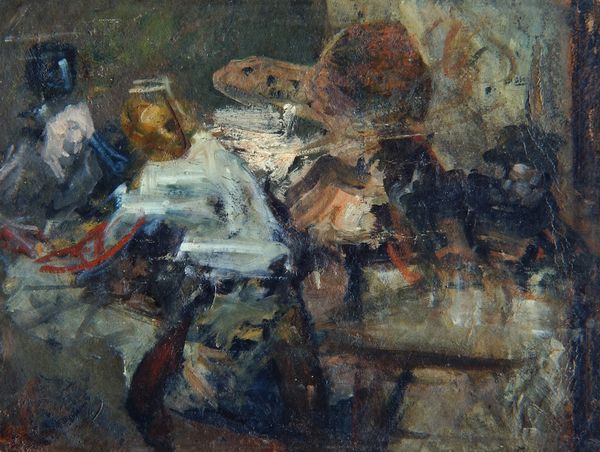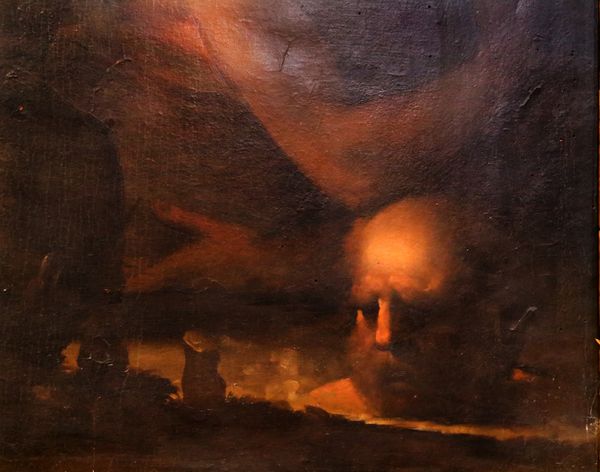
#
cyberpunk
#
abstract painting
#
cosplay
#
graffiti art
#
grungy
#
derelict
#
neo expressionist
#
spray can art
#
urban art
#
mixed media
Dimensions: 50 x 70 cm
Copyright: Vasiliy Ryabchenko,Fair Use
Editor: "Temptation," created in 1989 by Vasiliy Ryabchenko... it's a visually chaotic mixed media piece. There's a lot to take in. What jumps out to me is how the composition almost feels deliberately unbalanced, with disparate elements vying for attention. How do you read the overall structure? Curator: Indeed, the lack of a traditional focal point is immediately apparent. Rather than seeking balance, Ryabchenko constructs a visual field defined by the tension between its constituent parts. Note how the collage elements – the photograph, the fan of cards – disrupt the painted surface. Editor: Yes, it feels very fragmented. It's not something I'd call harmonious. Curator: Harmony, in the conventional sense, seems far from the artist’s intent. Consider instead the relationship between line and shape. How do the geometric forms interact with the organic brushstrokes? Observe the contrast between the flatness of the collaged elements and the implied depth of the painted sections. What sense of space do these compositional choices create? Editor: It feels... unstable. Like things could fall apart any second. The juxtaposition of textures – smooth paper against rough paint – adds to that feeling. Curator: Precisely. The instability is not merely aesthetic; it is structural. Ryabchenko seems to be deliberately dismantling pictorial conventions, challenging the viewer to find coherence in the midst of visual disarray. This deconstruction raises an important question: can we truly "resolve" the image into a singular meaning, or are we meant to embrace the ambiguity? Editor: I never considered looking at it that way, I was stuck trying to piece it all together in a conventional way! Thank you. Curator: The goal is not to reach a definitive conclusion but to recognize the work as an investigation into the very nature of visual representation.
Comments
No comments
Be the first to comment and join the conversation on the ultimate creative platform.
